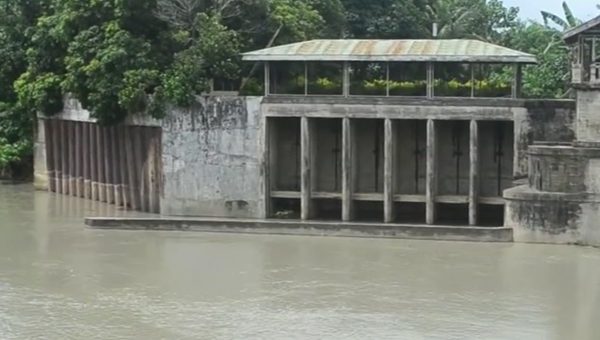
ILOILO – The water level at the dam in the municipality of Maasin is dropping gradually, according to the Metro Iloilo Bulk Water Supply Corporation (MIB), the joint venture company between Metro Iloilo Water District (MIWD) and Metro Pacific Water (MPW).
Maasin dam is MIWD’s main source of water that is distributed in Iloilo City and the Iloilo provincial towns of Oton, Pavia, Santa Barbara, San Miguel, Leganes, Maasin, and Cabatuan.
The water level is still far from critical, according to Engineer Rolixto Jodieres Jr., MIB’s chief operating officer.
But he said the impending El Niño phenomenon could certainly further aggravate the situation.
According to the state-run Philippine Atmospheric, Geophysical and Astronomical Services Administration (Pagasa), a mild El Niño may start hitting the country in the first quarter of this year.
As of midnight of Feb. 26, the dam’s water level was at 94.33 meters above sea level – a little higher than the 93.80 meters which is the critical level of the dam’s water, said Jodieres.
“We can still deliver the volume of water that MIWD requires,” said Jodieres.
He, however, said a prolonged dry spell could adversely affect the water volume.
If the dam’s water reaches critical level, Jodieres said, MIB has alternatives sources of water – auxiliary wells.
“We have wells in (Barangay) Tabucan (Mandurriao, Iloilo City),” said Jodieres.
MIB also has a newly constructed infiltration gallery in Cabatuan, Iloilo that produces around 10,000 cubic meters of water each day, he added.
During normal conditions, Jodieres said, the Maasin dam produces 33,500 cubic meter of water daily for processing at MIWD’s water treatment plant in Santa Barbara, Iloilo.
El Niño is a weather pattern associated with reduced rainfall.
According to Pagasa, climate monitoring and analyses indicate that the unusually warm sea surface which started since November 2018 is expected to become a full-blown El Niño.
Dry spell and drought, both “precursors” of El Niño, were observed in several provinces in Luzon and Mindanao from September last year to mid-January 2019, Pagasa climate monitoring chief Analiza Solis earlier said.
The weather bureau defines dry spell as three consecutive months of 21-60 percent rainfall reduction, while drought is either a dry spell that extends to five months, or at least 60 percent rainfall reduction for 3 consecutive months.
Early this week, MIWD alerted consumers about intermittent low water pressure in some service areas.
Some distribution lines would be shut down for the rehabilitation of MIWD’s water treatment plant. MIB is upgrading the treatment plant from 37 million liters per day (MLD) to 50 MLD design capacity.
The rehabilitation started on Feb. 26 and would last until March 31.
State-of-the-art components would replace existing old electrical and mechanical parts of the water treatment plant.
The rehabilitation and upgrade will result in a partial shutdown of the water treatment plant, reducing water supply from 35 MLD to 26 MLD.
Under a P2.8-billion joint venture agreement with MIWD, MIB would work for the rehabilitation, operation, management, and expansion of water production facilities.
“The water treatment plant upgrade is expected to boost our water delivery capacity and is a step towards ensuring that every Ilonggo will have access to clean and potable water,” said Dr. Jessica Salas, MIWD chair./PN



